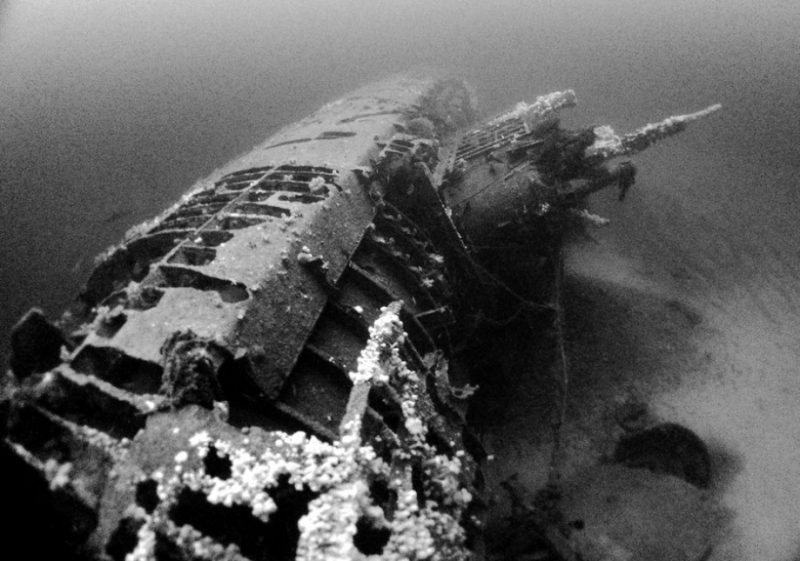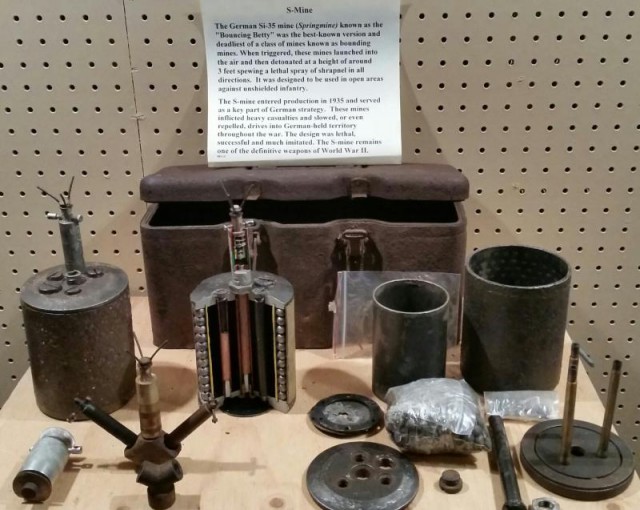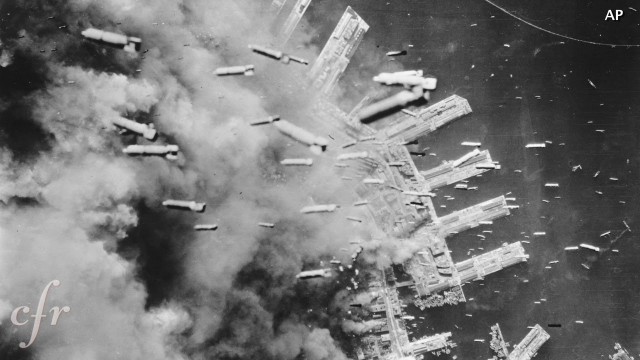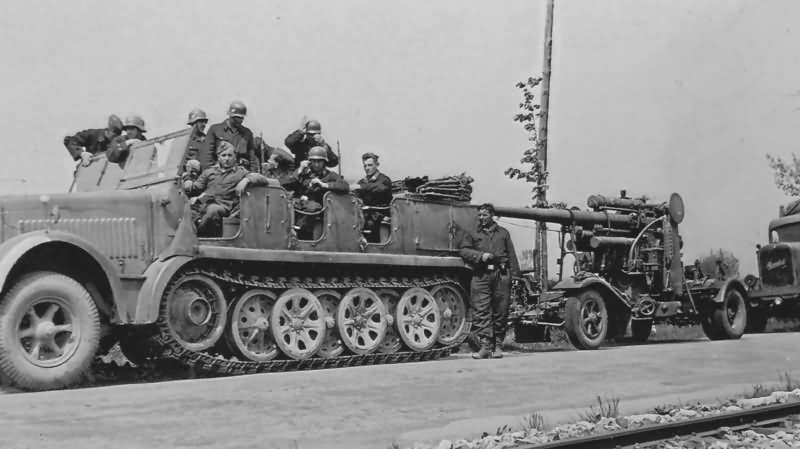During World War II the Allies and Axis powers raced with each other to produce the most devastating and terrifying weapons.
Many of them gave rise to weapons that the military forces of the world use today. Here are some of them.
The MG 42
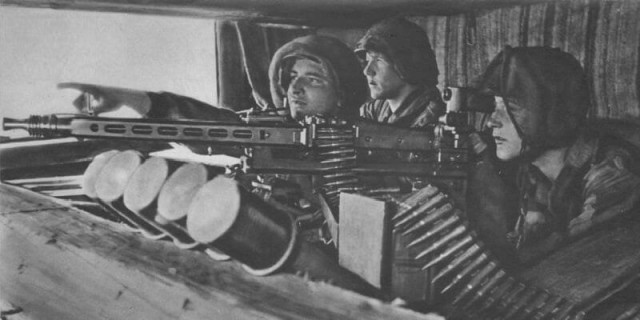
The MG-42 is a Mauser machine gun and uses the Mauser cartridge (7.92x57mm) and is suited for general-purpose. It was created in Nazi Germany and was heavily used by the Waffen-SS and Wehrmacht at the end of World War 2.
It was initially made to replace the Mg-34 as it was cheaper to manufacture as well as quicker to make too, but in the end, both machine guns remained in production throughout the War.
The MG-42 machine gun has been proven to be reliable, durable, simple and easy to use and is most handy in that it can produce a higher than usual volume of suppressive fire.
It could average between 1,200 and 1,500 rounds per minute which was fantastic for this type of gun.
This gun was still being used beyond the War ending and was the basis for the later MG1, which was almost identical to the MG-42
The S Mine
More popularly known as the Bouncing Betty, the S Mine was a German invention. A small charge would cause the mine to rise about 3 feet and then spray 360 steel balls and other shrapnel.
It had a deadly radius of 250 feet. Anything in its path, especially human flesh, and bone, was torn to shreds. It was triggered by contact or by trip wires.
The Germans began producing the mines in 1935. They used it to sinister effect. So lethal was it that versions were constructed by the United States, France, Russia and Finland.
Hawker Typhoon
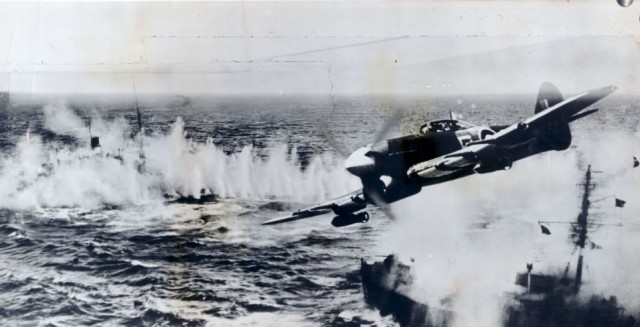
The Hawker Typhoon, known to the Royal Air Force as Tiffy, was a single-seater fighter/bomber. It was produced by Hawker Aircraft and introduced to the RAF in the middle of 1941.
It had a 2000 horsepower engine. It was armed with 12 machine guns, and, later in the war, with bombs and rockets.
The Typhoon was intended to replace the Hawker Hurricane as a medium to high altitude interceptor but instead proved effective at low altitudes.
In fact, it was the only RAF aircraft that could take down the Luftwaffe’s Focke-Wulf Fw190 at low heights.
Despite design flaws ruling out a wider role, the Typhoon became one of Britain’s most successful ground attack aircraft.
Its use was promoted by the RAF fighter and test pilot Roland Beaumont.
It was more than capable at ambushing enemy aircraft at night and was an effective long-range fighter.
Atomic Bomb
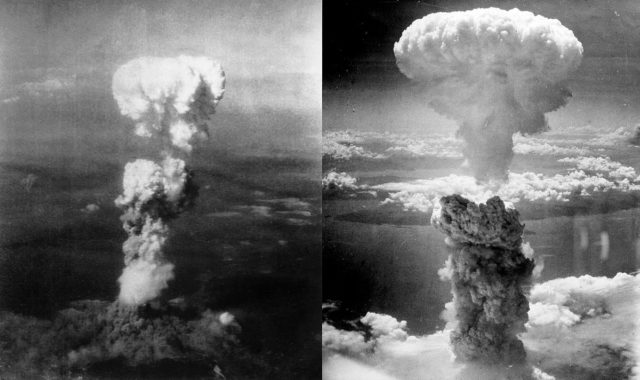
Little Boy, the bomb that was dropped on Hiroshima, leveled an area of five square miles (13 square kilometers).
118,661 people perished, according to a Japanese count at the time, though a later estimate suggests that as many as 14,000, out of a population of 35,000, died from radiation and other related illnesses.
Sixty percent of the city was destroyed. ‘Little’ Boy struck with the equivalent of between 12000 and 15000 tons of TNT.
The bomb dropped on Nagasaki three days afterward, named Fat Man, killed 74,000. Nagasaki is surrounded by mountains and because of this the radius of devastation was only 2.6 square meters (6.7 square kilometers).
The two bombings compelled Japan to surrender on August 14, 1945.
The names Little Boy and Fat Man were references to Franklin Roosevelt and Winston Churchill respectively.
Modern nuclear weapons are of course far more powerful than the bombs that devastated Hiroshima and Nagasaki.
Flamethrower
![A Churchill tank fitted with a Crocodile flamethrower in action. This flamethrower could produce a jet of flame exceeding 150 yards in length [© IWM (TR 2313)].](https://www.warhistoryonline.com/wp-content/uploads/sites/64/2016/07/8.Churchill_Crocodile_01-640x447.jpg)
Flamethrowers had been used in World War I, but they were cumbersome and required teams to operate them. The Flammenwehr 35 was also used in the invasion of the Netherlands and France, where it proved useful against fortifications.
The Germans also used it for urban fighting in Warsaw in 1943 and 1944.
Observing its success, other countries constructed their own flamethrowers. The US Army introduced a flamethrower in 1942. Despite its advantages, the flamethrower did have some drawbacks.
Operators were vulnerable since they could not use a firearm and the weapon had to be used at close range. This was temporarily solved by mounting them on tanks.
The Germans had the Flammpanzer, utilizing the chassis of a Sdkfz 251 half-track, Panzer II or Panzer III.
However, there were other problems. The large fuel and pressurized tank carried on the soldier’s back was vulnerable.
Some German flamethrowers reduced the tank to cover only the lower back. In the last years of the war, Germany made the Einstossflammenwerfer 46, which was much smaller and compact than previous flamethrowers.
After the war flamethrowers were less used. They are generally considered ineffective in modern combat situations.
Firebombing
Firebombing destroys urban areas by dropping incendiary devices. The destruction is caused by fire rather than bomb blast.
Incendiary warfare began with the invention of gunpowder, and well before, but it was in World War I that Zeppelin airships first dropped firebombs on targets such as London and Paris.
In World War II small incendiary devices such as cluster bombs were used. Attacks were often preceded by conventional bombing, which demolished roofs and windows, allowing incendiaries to enter buildings.
During World War II firebombing was conducted extensively by both Allied and Axis forces. Chongqing in China was attacked by the Japanese in 1939.
The Germans bombed London and other British cities in 1940 and 1941. But the most intense firebombing missions were carried out by the Allies.
From 1942 to the end of the war most German cities were attacked, and the horrible firestorm in Dresden that killed 25,000 people is notorious.
Most Japanese cities were also bombed during the last months of the war.
The Flak 88
This German 88 mm gun was first used in the Spanish Civil War in 1936 as an anti-aircraft gun. However, it was quickly discovered that it made an excellent tank destroyer as well.
It had a high muzzle velocity and fired a heavy projectile, making it ideal for the purpose.
It was effective again in the 1940 invasion of France, especially against the French CharB1 and the British Mk.II Matilda tanks, both of which were heavily armored. The Italian Army began to adopt it as well.
The Flak soon gained a reputation. In North Africa, it could hit Allied tanks at over 1000 meters.
On the Eastern Front, before the arrival of heavy tanks, this gun alone could take out the Soviet T-34/76 and KW-1 tanks.
It could also be used as field artillery and was so employed at the Battle of the Bulge in 1944.
Despite its effectiveness, the Flak could not be concealed, and captured guns were used by the Allies in Western Europe in 1944.
After the war, a number of countries, including Yugoslavia and Denmark incorporated the 88mm Flak in their arsenals.
U-Boats
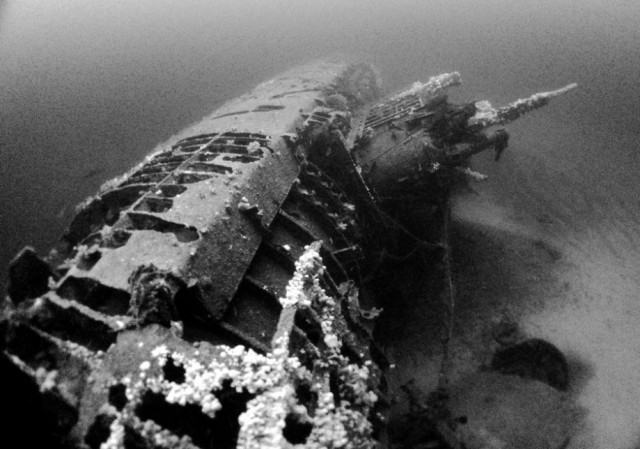
U-boats (Unterseeboot), or submarines, were used to great effect by Germany in the First World War. During World War II they returned as a threat to Allied naval and merchant ships.
Winston Churchill wrote ‘the only thing that ever really frightened me during the war was the U-boat peril.’
If German U-boats had succeeded in cutting British supplies and blockading its sea lanes, Britain would probably have surrendered.
Further, if Britain and the United States could not have broken the German blockade, troops could not have been landed in North Africa and other Mediterranean theaters.
Indeed, troops and supplies would not have been gathered for the D-D landings in 1944 which lead to the defeat of Germany.
The Battle of the Atlantic was the defining point in World War II. In this, the longest continuous military campaign (1939 – 1945), Allied and German submarines, warships and aircraft were ranged each other for control of the vital supply routes between Britain and the United States and the Empire.
Ultimately the Allies broke the blockade, but it was a close thing. The victory was won on the high seas, not on the fields of Europe.
The V1
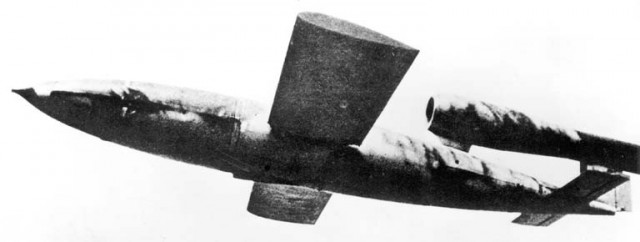
The Vergeltungswaffen (‘retaliatory weapons’) or V1s, were long range, pulsejet-powered cruise missiles designed for long-range bombing.
The sound the missile made as it approached an Allied city has been compared to a motorcycle. As it approached the target, it dove with a terrifying sound.
Before it struck the propulsion unit cut out and an eerie silence preceded detonation.
From 1944 – 1945 9,251 missiles targeted British cities. Most struck London. 6,184 civilians were killed. Croydon alone took 142 hits.
Following the invasion of Europe by the Allies in 1944, the Germans continued to target liberated cities.
Besides the V1 there was also the V2 and the V3, a super cannon that fired projectiles with the aid of rocket launchers.
